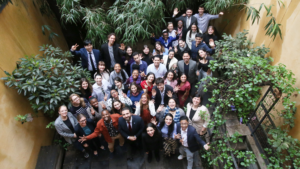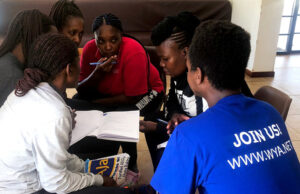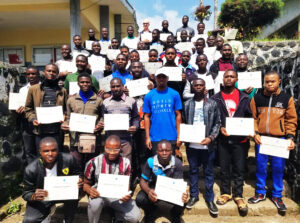The Women’s March, International Women’s Day, and the 61st Commission of the Status of Women are just some of the ways that quite recently, women have taken over the international spotlight. The topic is unavoidable, but just what are we talking about? The women’s movement sparks millions of questions and quite possibly even more different answers than there are questions. However, in order to address these questions, I propose a possible method first proposed by Martin Buber which when applied, offers widespread solutions.
William Golding once said, “I think women are foolish to pretend they are equal to men, they are far superior and always have been.” Although I won’t try to use this as grounds for argument, I do want to pick up on the fact that it is almost impossible to discuss woman without doing so within the framework of the dynamic between man and woman. Men and women are not equal, as Golding points out, but this is because they are different. To claim they are the simply ‘equal’ is a fallacy, and more specifically a false equation fallacy. They are, however, equal in value. Men and women share the same human dignity, despite having different natures.
This distinction is not the same as the principle of ‘separate but equal’ used to justify the historic segregation of blacks and whites. Instead, the distinction is best embodied by the beloved French expression “Vive la difference,” a cultural attitude which accepts the differences between men and women. These differences are not just some arbitrary and detrimental side effect of a patriarchal society and extend beyond biological borders. In fact, embracing these differences creates a climate that encourages both individuals and society as a whole to flourish through mutual recognition and respect. This manner of valuing what makes us different and appreciating the ways in which it can be both complementary and conducive to living is a more person-centered approach.
This idea of different but equal in value is similar to the existential model of the twofold I-You presented by Buber in Chapter 2 of WYA’s Certified Training Program. This document explains how society lives in relationship with one another and how we can strive to do so in a mutually respecting way. This I-You relationship is juxtaposed by the I-It relationship, where It is an object and contained by borders and You is the subject, not contained by borders. “Whoever says You does not have something for his object. For wherever there is something there is also another something; every It borders on other Its; It is only by virtue of bordering on others. But where You is said there is no something. You have no borders.” This relationship is the basic existential relationship between Self and Other, and the challenge to see the Other not as an It but as a You. If we claim that the only differences between men and women are biological markers, we thus define them negatively and solely based on sex. By emphasizing that sex is the only defining characteristic and gender is arbitrary, we objectify man… reducing him the existential position of an It by ascribing to him borders and defining him in light of them.
Buber’s antidote of the I-You reconciles this crisis beautifully and poetically, explaining “Whoever says You does not have something; he has nothing. But he stands in relation…The basic word I-You establishes the world of relation.” This approach to the relationship between I-You is a valuable one. In fact, the I-You is not so different from the He-She. The I-You way of acknowledging the other as a subject without borders is just as easily applied to men and women as it is self and other.
When applied to the challenges brought to attention by the 61st Commission on the Status of Women and the new wave of feminism in general, is quite useful. For example, since sexism in the United States today is virtually non-existent on paper anywhere in public or private policy, what are we demanding in our protests in Washington? Women’s equality still has long ways to go, primarily in the workplace. Women make $0.77 for every $1.00 that men do, according to a new statistic by UN Women. Although this is a serious issue, I really don’t think it is a campaign we should take up on capitol hill. Instead, it is a problem whose nature dictates a different approach, an existential problem with a human-centered solution. Both women and men alike should venture to take up this cross in their daily interactions instead of through a megaphone. Sexism (and racism, ageism, and every other -ism for that matter) exists because individuals (as the fundamental unit of society) fail to recognize the equal value of the other. This pay gap is due to peer-to-peer, management-to-employee discrimination. Sexism in the workplace is a serious violation of human dignity but as Buber suggests, the correct response lies in reciprocity, in the relationship. More specifically in this case, in the capacity to properly see the value of the work put forward by a woman in comparison (but not in opposition) to her male counterpart.
When we allow human dignity to be the foundation of our relationships, sexism, discrimination, and othering are not only incompatible but also incomprehensible. When women and men exist in a relationship where each other’s dignity is valued, their differences are no longer a threat to be overlooked, but an asset that contributes to the quality of living, or in this case, the quality of being.
Written by Flannery McGale, a 2017 batch 1 North America intern.








